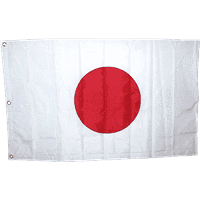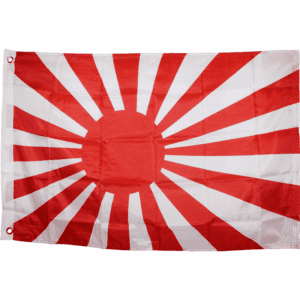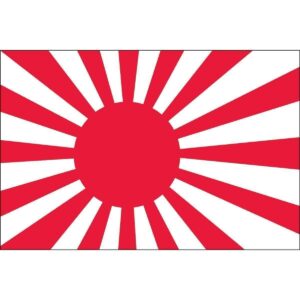Home » Japan Flag
Product Categories

Japan Flag
Japan Flag for Sale / Japanese Country Flags
Japan’s Flag History
Have you ever wondered about the stories behind the flags we see? Flags are not just pieces of fabric fluttering in the wind; they are symbols of a nation’s identity, history, and pride. Today, let’s embark on an intriguing journey to explore one such flag – the Japan Flag. Why Japan? Because this country, with its rich history and unique culture, offers a fascinating story through its flags.
A Brief History of Japan
Japan, an island nation in East Asia, has a history that dates back thousands of years. Known for its unique blend of ancient traditions and modern technology, Japan has been a center of cultural and technological advancements. But what about its early days? Japan’s history is a tapestry of imperial dynasties, samurai warriors, and periods of isolation and expansion. Each era has contributed uniquely to what Japan is today.
Question: Did you know that Japan is also called “Nihon” or “Nippon,” which means “the sun’s origin”?
This name beautifully reflects in the Japan Flag.
The Japan Flag: A Symbol of Simplicity and Elegance
 Now, let’s talk about the Japan Flags. The national flag of Japan, known as the Nisshōki (the sun-mark flag) or Hinomaru (the circle of the sun), is a simple yet profound symbol. It features a red circle, representing the sun, on a white background. This design encapsulates Japan’s nickname – the Land of the Rising Sun.
Now, let’s talk about the Japan Flags. The national flag of Japan, known as the Nisshōki (the sun-mark flag) or Hinomaru (the circle of the sun), is a simple yet profound symbol. It features a red circle, representing the sun, on a white background. This design encapsulates Japan’s nickname – the Land of the Rising Sun.
Question: Have you ever noticed the deep significance of the red and white colors in the Japan Flag?
Red symbolizes strength and passion, while white stands for purity and honesty – values deeply ingrained in Japanese culture.
The Evolution of Japan Flags Through History
Japan’s history is mirrored in the evolution of its flags. From the feudal era to the modern-day, each historical flag of Japan tells a story.
The Feudal Era
In the feudal times, different samurai clans had their own flags. These were more than just identifiers; they were embodiments of the clans’ honor and pride. Rich in colors and emblems, each flag was unique and told the story of its bearers.
The Meiji Restoration
A significant shift occurred during the Meiji Restoration in the late 19th century. Japan was opening up to the world after centuries of isolation, and with this, the Japan Flag we know today started to gain prominence as a national symbol.
World War II and Postwar Period
 During World War II, different versions of the Japan Flag were used, some with additional rays of the sun, symbolizing expansion and military strength. However, post-war, Japan reverted to the simple sun-mark design, reflecting a return to peace and reconstruction.
During World War II, different versions of the Japan Flag were used, some with additional rays of the sun, symbolizing expansion and military strength. However, post-war, Japan reverted to the simple sun-mark design, reflecting a return to peace and reconstruction.
Facts: Japan Flag
Here are some unique facts about the Japan Flag:
- The exact shade of red has changed slightly over the years.
- The flag’s design is so simple that it’s considered one of the easiest flags in the world to draw.
- The flag has a unique ratio of 2:3, which is different from many other national flags.
Japanese Flag through Time…
Today, the Japan Flag is a symbol of peace, unity, and national pride. It is not just a flag; it’s a reminder of Japan’s journey through time – from its ancient past to its present as a global leader in technology and culture.
The Japan Flag, in its simplicity, teaches us about the power of symbols and the stories they carry.
How does understanding the history and significance of a flag like Japan’s enhance our appreciation for different cultures around the world?
Flags are more than symbols; they are the narratives of nations, woven into fabric. As we learn about them, we not only gain knowledge but also develop a deeper respect and understanding of the world’s diverse heritage.
At Ultimate Flags, we are proud to help you fly the flags that are true to your history, heritage and values.






